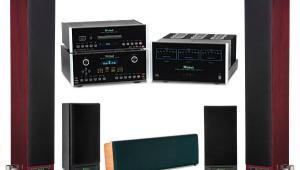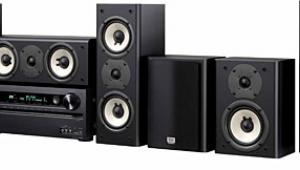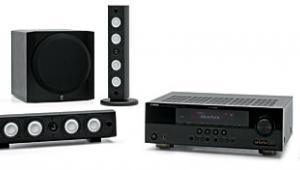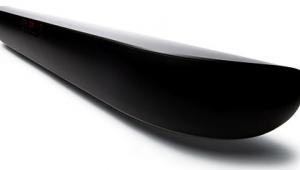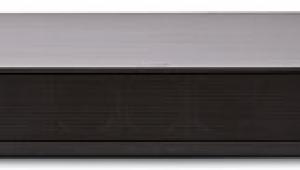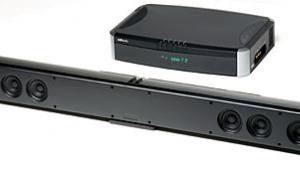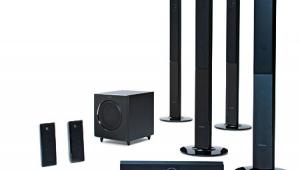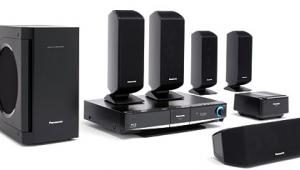Samsung HT-E6730W Home Theater System HT Labs Measures
Two channels driven continuously into 8-ohm loads:
0.2% distortion at 46.0 watts
1% distortion at 60.1 watts
Two channels driven into 4-ohm loads:
0.2% distortion at 75.1 watts
1% distortion at 80.8 watts
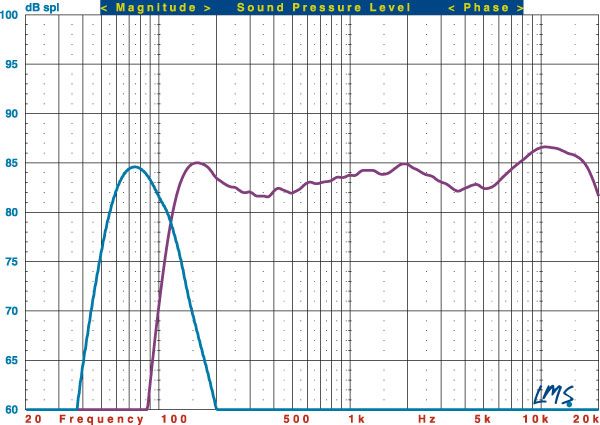
This graph shows the quasi-anechoic (employing close-miking of all woofers) frequency response of the L/R (purple trace) and subwoofer (blue trace). The passive loudspeaker was measured at a distance of 1 meter with a 2.83-volt input.
The L/R’s listening-window response (a five-point average of axial and +/–15-degree horizontal and vertical responses) measures +2.56/–2.43 decibels from 200 hertz to 10 kilohertz. The –3-dB point is at 121 Hz, and the –6-dB point is at 113 Hz. Impedance reaches a minimum of 5.77 ohms at 288 Hz and a phase angle of –36.39 degrees at 6.9 kHz. Sensitivity averages 84 dB from 500 Hz to 2 kHz.
The subwoofer’s close-miked response, normalized to the level at 80 Hz, indicates that the lower –3-dB point is at 58 Hz and the –6-dB point is at 53 Hz. The upper –3-dB point is at 101 Hz.
Crosstalk at 1 kHz driving 2.83 volts into an 8-ohm load was –75.34 dB left to right and –78.58 dB right to left. THD+N from the amplifier was less than 0.077 percent at 1 kHz when driving 2.83 volts into an 8-ohm load. The signal-to-noise ratio with an 8-ohm load from 10 Hz to 24 kHz with “A” weighting was –87.70 dBrA.—MJP
Video Test Bench
The Samsung system’s player/AVR section was tested in two ways: first with its own built-in player and second by driving one of its HDMI inputs with an outboard HDMI source—in this case another Blu-ray player. It passed all of our tests in both instances. The only minor quirk was that with its own player it broke lock with each pass of our 2:2 HD loop but immediately restored it, whereas with an external player, it held the lock on multiple passes. This should have no significance in normal use.—TJN



